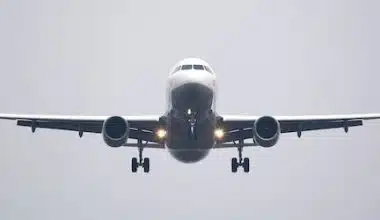The Trans-Canadian Railway, sometimes cited as one of the most famous engineering feats in Canadian history, has been essential in forming the country’s terrain and tying its various areas together. The Trans Canadian Railway runs from Toronto on the east coast to Vancouver on the west coast, traversing the entire length of Canada. Between 1881 and 1885, the railway’s foundation was laid between eastern Canada and British Columbia, linking with Ottawa. Continue reading to learn more about the cost and route of the trans-Canadian railway.
As a crucial piece of Canada’s transportation network, it creates chances for business development, trade, and urban expansion. The railway is a well-liked tourist destination because it provides beautiful routes and spectacular views of Canada’s varied landscapes. It allows travelers to see these natural wonders by connecting various national parks, including Jasper and Banff National Parks. The railway also fosters cultural diversity, provides a variety of destinations, and runs famous train routes.
Trans-Canadian Railway
A historic railway network in Canada is the Trans-Canadian Railway, often referred to as the Trans-Canada Railway or Trans-Canada Railroad. The Canadian Pacific Railway (CPR), which had a significant impact on Canada’s development and settlement, built it. The railway connects numerous provinces and territories across the nation and runs from the Atlantic to the Pacific coasts. Between 1881 and 1885, the Trans-Canadian Railway was built, and on November 7, 1885, it was formally inaugurated.
Features of the Trans-Canada Railway
The Trans-Canadian Railway is not only an important component of the country’s transportation network but also a representation of its culture, history, and scenic beauty.
#1. Transcontinental Connection
The Trans-Canadian Railway is a transcontinental rail network that crosses Canada and links the Pacific and Atlantic oceans. It offers a crucial transportation link that enables the cross-country movement of people, products, and resources.
#2. Historical Importance
A great engineering achievement, the building of the Trans-Canadian Railway was essential to the growth and colonization of Canada. It brought about trade, commerce, and the expansion of towns and communities along its path, and it carried out a promise made by the Canadian government to British Columbia.
#3. Scenic Routes
The views of Canada’s various landscapes are magnificent from the Trans-Canadian Railway. Along the way, travelers can take in the splendor of forests, prairies, snow-capped mountains, and other natural beauties. It offers a chance to experience Canada’s vastness and natural beauty.
#4. A tourist attraction
A well-liked tourist destination, the Trans-Canadian Railway offers sightseeing and picturesque train rides. Travelers can set off on multi-day excursions while enjoying the elegant and comfortable railway cabins and the beautiful scenery outside. National Geographic lists it as one of the top train journeys in the world.
#5. A connection to national parks
The Trans-Canadian Railway links several national parks in Canada, including Jasper and Banff National Parks. Passengers can discover these natural wonders while traveling and enjoy outdoor pursuits including hiking, wildlife viewing, and scenic walks.
#6. A Variety of Locations
Travelers may see different parts of Canada as the Trans-Canadian Railway travels through numerous cities and villages. It offers a chance to discover and learn about each location’s distinctive culture, history, and attractions.
#7. Cultural Diversity
The construction of the Trans-Canadian Railway involved many thousands of workers, mostly Chinese immigrants. This diverse labor force contributed to the completion of the railway and strengthened Canada’s multicultural identity.
#8. Famous Railroad Routes
The Trans-Canadian Railway offers a variety of well-known rail routes, most notably the Canadian, which serves as VIA Rail’s main route. Passengers travel along this route through breathtaking scenery such as the Rocky Mountains, the Prairies, and the Canadian Shield for a distance of around 4,466 kilometers (2,775 miles).
#9. Elegant Train Facilities
For passengers seeking a more upmarket experience, the Trans-Canadian Railway offers elegant train accommodations. These lodgings frequently have roomy cabins with cozy beds, private toilets, and access to extras like dining cars, lounges, and observation decks.
#10. Accessibility
For travelers with impairments or mobility issues, it offers accessible transportation choices. To guarantee that everyone can enjoy the beauty of Canada by train, this includes accessible cabins, ramps, lifts, and other amenities.
Trans-Canadian Railway Cost
Via Rail, which runs the Trans-Canadian Railway, offers a variety of pricing alternatives to accommodate varied spending limits and preferences. These prices can be for more affordable or expensive services. The cost of the Trans Canadian Railway varies according to lodging choice, distance traveled, and level of service.
These costs are approximations and subject to change.
#1. Economy Class
Depending on the distance and particular route, economy-class tickets can range from about $400 to $800 per person.
#2. Business Class
According to the route and extras offered, business class rates can range from about $800 to CAD 1,200 per person, which is normally more expensive than economy class fares.
#3. Sleeper Plus Class
Depending on the type of lodging selected, travel in the Sleeper Plus class, which provides individual cabins or sleepers, might be expensive. Depending on the length of the trip and the cabin type chosen, prices for the Sleeper Plus class can range from about $1,500 to CAD 3,000 per person.
#4. The Canadian On the Trans-Canadian Railway
The Canadian is a first-class train that provides an opulent journey. Depending on the level of service, the hotels, and the distance traveled The Canadian’s prices can range from about CAD 4,000 to CAD 8,000 or more per person.
#5. Special offers and packages
VIA Rail provides unique deals, promotions, and bundles with combined services or reduced rates. These may offer the chance to reduce the overall price of a Trans-Canadian Railway trip.
When making a reservation, there are additional costs or taxes to take into account. Here are some instances of possible taxes and fees:
#1. GST
GST will be added to all prices at the time of booking confirmation. For Canadian GST, the rate is now 5%.
#2. Meals
Meals may or may not be included in the ticket price, depending on the level of service and the kind of accommodations selected. Onboard the train or as part of a package, some meals might be for sale. It’s advisable to review the specifics of your ticket or package to determine whether meals are included and whether there are any other fees.
#3. Baggage
There is a limit to the amount of luggage that VIA Rail will transport without charging. However, there can be extra fees for excessive or excess baggage. It is essential to study the baggage rules of VIA Rail for all the specifics and any applicable fees.
#4. Optional Services
There may be supplementary fees for some auxiliary features or services. There may be an additional charge for Wi-Fi, access to corporate lounges, or unique onboard amenities.
#5. Upgrades
You might be able to upgrade your ticket to a better service level or a different kind of lodging, depending on availability. In general, upgrades are more expensive, and the price can change depending on the upgrade’s specifics and availability.
Trans-Canadian Railway Tour Operators
Many tour operators provide packages and guided excursions for tourists who desire to take the Trans-Canadian Railway, a well-known rail route in Canada. Trans-Canadian Railway excursions are available from these tour operators:
#1. Great Rail Journeys
The Canadian Rockies and Vancouver are just two of the places where Great Rail Journeys offers escorted rail-based vacations. They offer thorough travel plans, lodging, and transportation, such as the Trans-Canadian Railway. The price of the multi-day Trans-Canada Rail Adventure tour, which includes luxurious lodging, sightseeing, and some meals, is $4,395 per person.
#2. Rail Discovery
They specialize in escorted tours that take place on trains, such as trips to Vancouver and the Canadian Rockies. Rail Discoveries provides housing, transportation, and guided tours, including those of the Trans-Canadian Railway.
#3. Canada Rail Vacations
With a variety of rail travel packages available in Canada, Canada Rail Vacations can create itineraries, lodging, and transportation options that suit your interests. The cost of the Coast to Coast by Train package, which includes transfers, lodging, certain meals, and activities, starts at $12,340 for a 19-day journey.
#4. Rocky Mountaineer
Renowned tour company Rocky Mountaineer provides opulent train trips across the Canadian Rockies, including stretches of the Trans-Canadian Railway. For a 12-day trip from Vancouver to Toronto on the Rocky Mountaineer, the Trans-Canada Rail Adventure tour starts at $3,850 per person and includes deluxe lodging, sightseeing, and some meals.
#5. Canada’s Fresh Tracks
Trans-Canadian Railway tours are among the personalized travel experiences that Fresh Tracks Canada specializes in designing in Canada. They provide a variety of packages that may be customized to your needs, letting you decide on the trip’s length, destinations, and side activities.
#6. Rail Travel in Canada
A travel company called Canadian Rail Travel provides a range of itineraries, from quick day trips to extensive cross-country journeys. Their routes could include halts at important cities, national parks, and other noteworthy landmarks. The Trans Canada By Rail Featuring VIA Rail’s Prestige Class package, which includes lodging, meals, and excursions, costs $7,399 per person for a 14-day trip.
#7. Vacations By Rail
An international travel agency that specializes in rail-based vacations is called Vacations By Rail. Trans-Canadian Railway tours are available, and they can be tailored to your preferences and interests.
#8. VIA Rail Canada
The national railway company of Canada, VIA Rail Canada, provides its own Trans-Canadian Railway tours. They provide a variety of options, including multi-day trips that cover the entire nation or briefer trips that concentrate on particular areas. Their prices start at $8,230 for a 6-day trip that takes them through the vast Prairies and the Canadian Rockies from Vancouver to Toronto.
#9. Brewster Travel Canada
Trans-Canadian Railway train travel is one of the customizable itineraries offered by Brewster Travel Canada. They mix rail travel with other activities, such as excursions to national parks or tourist hotspots.
#10. Discover Canada Tours
The Trans-Canadian Railway is only one of the many travel experiences that Discover Canada Tours offers. They provide a variety of choices, ranging from affordable tours to lavish events.
Trans-Canadian Railway Route
Travelers can get a fascinating peek into Canada’s natural beauty, history, and cultural diversity by taking the Trans-Canadian Railway route, which covers the country’s vast and diverse regions. It’s one of the world’s most recognizable rail routes. Some of the Trans-Canadian Railway routes are as follows:
#1. Toronto, Ontario
Toronto, the largest city in Canada and the provincial capital of Ontario, is where the Trans-Canadian Railway starts. This vivacious metropolis, which acts as the starting point for the railroad excursion, provides a wide variety of cultural activities, retail stores, and culinary options.
#2. Sudbury, Ontario
The railway travels farther west to Sudbury, a city renowned for its extensive mining heritage and breathtaking natural surroundings. The Canadian Shield, a geological region with rugged terrain and pristine lakes, is where Sudbury is situated.
#3. Winnipeg, Manitoba
The capital city of Manitoba, Winnipeg, is the next significant stop on the route. This center of culture provides a variety of historical, artistic, and outdoor pursuits. It was a key factor in the growth of the Canadian West and is frequently referred to as the Gateway to the West.
#4. Saskatoon, Saskatchewan
The railroad travels through Saskatoon, a bustling metropolis on the South Saskatchewan River’s banks, as it continues its trip. Saskatoon is renowned for its stunning river valley, thriving artistic community, and extensive Indigenous heritage.
#5. Edmonton, Alberta
The capital of Alberta, Edmonton, is then reached on the railway line. The West Edmonton Mall, one of the biggest shopping malls in the world, is only one of the historic landmarks in Edmonton that are well-known for their beauty, as are its bustling festivals and magnificent river valley.
#6. Jasper, Alberta
The railway travels from Edmonton through the Canadian Rockies to Jasper, an attractive alpine hamlet in Alberta’s Jasper National Park. The breathtaking alpine scenery, animals, and outdoor pursuits, including hiking, skiing, and wildlife viewing, make Jasper famous.
#7. Banff, Alberta
The railway travels through Banff, a well-known tourist attraction with imposing mountains, turquoise lakes, and hot springs, as it continues through the Canadian Rockies. In addition to providing many options for outdoor excursions, Banff National Park is a UNESCO World Heritage Site.
#8. Revelstoke, British Columbia
The railway travels through Revelstoke, a picturesque alpine hamlet sandwiched between the Selkirk and Monashee mountain ranges, as it continues to go west. The outdoorsy activities available in Revelstoke, like skiing, snowboarding, and hiking, are well-known.
#9. Rogers Pass
An important feature of the Trans-Canadian Railway route is this mountain pass. It is a well-liked location for hiking and wildlife viewing and is located in Glacier National Park. It offers stunning vistas of towering peaks.
#10. Vancouver, British Columbia,
The Trans Canadian Railway’s ultimate stop is Vancouver, a bustling coastal metropolis on Canada’s west coast. The city of Vancouver is renowned for its breathtaking natural beauty, multiculturalism, and vibrant arts and food sectors. It functions as a significant port and entrance to the Pacific Ocean.
What is a Trans-Canadian Railway?
The Trans-Canadian Railway traverses Canada from the Atlantic Ocean in the east to the Pacific Ocean in the west. VIA Rail Canada operates a beautiful train ride from Toronto, Ontario, to Vancouver, British Columbia. The 4,466-kilometer route passes through a variety of environments, including the Canadian Shield, the Rocky Mountains, and the Canadian Prairies. The route offers opportunities to explore cities like Winnipeg, Saskatoon, Edmonton, and Jasper. During the journey, travelers can enjoy the excellent accommodations and services provided by the train.
How Much Does It Cost to Ride the Trans-Canadian Railway?
The price of a trip on the Trans Canadian Railway varies according to the package and service chosen. For the Toronto-to-Vancouver trip, Economy Class begins at $514, while VIA Rail tickets normally range from $35 to $150. The price for the Sleeper Plus Class is $1387 per person, while the price for the Prestige Class is $6261. Starting at $3,850 per person, the Rocky Mountaineer Trans-Canada Rail Adventure journey is reasonably priced. Royal Canadian Pacific offers all-inclusive vacation packages.
How Much Is a Train Ticket From Toronto to Vancouver?
Trans-Canadian Railway train tickets cost $476 on average from Toronto to Vancouver, with November being the best month for discounts. From $444 to $4,655 is the price range for several classes. These costs could change at any time.
How Many Days Does It Take to Cross Canada by Train?
Between 6 and 13 days are needed to travel by train on the Trans-Canadian Railway from Toronto to Vancouver. The Canadian train offers the chance to experience Canada’s vastness.
What Are the Two Major Canadian Railways?
The Canadian National Railway (CN) and the Canadian Pacific Railway (CP) are the two largest railways in Canada. In Canada, these two businesses run sizable freight rail networks. The bigger of the two, CN, is a publicly traded business; CP, which also has a transcontinental railroad system, is not.
How Long is the Trans Canada Railway?
From Toronto to Vancouver, the Trans-Canadian Railway travels a total of 4,466 kilometers (2,775 miles). This railway route runs across several provinces and has stunning scenery as it connects Canada’s eastern and western shores.
Conclusion
VIA Rail Canada operates the picturesque Trans-Canadian Railway Route from Toronto, Ontario, to Vancouver, British Columbia. The 4,466-kilometer route highlights the varied landscapes of Canada, including the Canadian Shield, the Rocky Mountains, and the Canadian Prairies. While enjoying the comfort and amenities of the train coaches, passengers can stop in cities including Winnipeg, Saskatoon, Edmonton, and Jasper.
- THE BEAUTIFUL MOUNTAINS IN CANADA: Facts & History
- DOWNTOWN TORONTO HOTELS: Best Accommodations In Downtown Toronto
- BIGGEST CAR RENTAL COMPANIES IN CANADA IN 2023
- ECONOMY CLASS: Flights and Features
- PLACES YOU CAN GO WITHOUT A PASSPORT IN 2023






